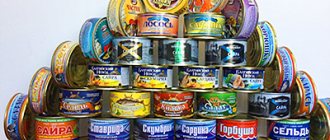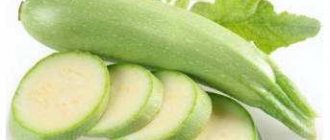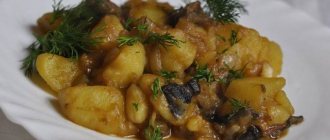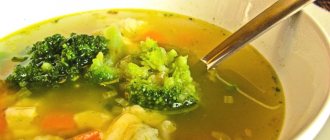Growing squash from seeds
Sowing squash seeds
Squash reproduces generatively - by seeds, which can be bought, or can be extracted from a well-ripened fruit.
Growing squash in open ground is carried out in seedlings and without seedlings. But whatever method you choose, before planting squash, you need to prepare the seeds for planting. To do this, immerse them for a day in an aqueous solution of a growth stimulator, then rinse thoroughly with water, wrap in damp gauze and keep for two days at a temperature of 20-25 ºC. There is another way to prepare seeds for sowing: they are heated for 5-6 hours at a temperature of 50-60 ºC. This measure reduces the risk of squash becoming infected with viral infections for which there is no treatment. Hardening of seeds gives good results. To do this, the seeds placed in fabric bags are first kept for six hours at a temperature of 18-20 ºC, and then for about a day at a temperature of 0-1 ºC. Immediately before sowing, disinfect the squash seeds in a one percent solution of potassium permanganate, then rinse in clean water and dry.
At the end of May, when the soil prepared for squash in the fall has warmed up well and the threat of return frosts has passed, level the ground on the site with a rake, remove weeds, form beds and dig holes measuring 70x70 so that the plantings are not too dense and the squash does not rot
Seeds are sown to a depth of about 8 cm, several in one hole, they are sprinkled with earth, carefully watered, the soil is compacted and covered with film before shoots appear.
Growing squash seedlings
For those who want to get a squash harvest as early as possible, there is no other option than to grow squash seedlings. Planting of squash seedlings is carried out in the second or third ten days of April, two seeds in disposable cups with a diameter of 8-10 cm with a mixture of humus and forest soil to a depth of 3-4 cm. The crops are covered with film or glass and kept at a temperature of 28-32 ºC, but when the seeds germinate, the glass should be removed and the temperature reduced to about 22 ºC during the day and 18 ºC at night. This is done so that the seedlings do not stretch too tall, but spend energy on developing the root system and cotyledon leaves. After a week you can return to the previous temperature regime.
Caring for squash seedlings consists of regularly moistening the soil and fertilizing. When the seedlings are 10 days old, they are fertilized with a mullein solution in a ratio of 1:10 with the addition of superphosphate infusion, 15 g of which is poured with a small amount of water the day before, left for a day, then the liquid is poured into the mullein solution without using the remaining sediment. Before planting the seedlings in the ground, they are fed again with a solution of 50 g of nitrophoska in 10 liters of water.
Picking squash
How to dive squash? No way. When the squash develops true leaves, the stronger of the two seedlings is left in a glass, and the second is not pulled out, but cut with scissors or a sharp knife directly above the ground, so as not to injure the root system of the remaining seedling.
Growing squash in a greenhouse
Planting squash in a greenhouse is carried out at the end of April in disposable cups with a diameter of 10 cm to a depth of about 3 cm in loose soil consisting of peat or turf soil, sand or sawdust and humus in a ratio of 5: 1: 4. Before placing in cups, the soil is fertilized at the rate of 7 g of ammonium nitrate, 5 g of potassium sulfide, 6 g of chalk and 6 g of double superphosphate per bucket of soil mixture, mixed thoroughly and watered. Cups with 2-3 seeds in each are covered with glass or film and kept during the day at a temperature of 22-25 ºC, and at night at 17-18 ºC.
As soon as the shoots appear, the film is removed, the shoots are initially protected from direct sunlight, and the temperature is lowered to 18-20 ºC by ventilation during the day, and to 15-17 ºC at night. After a week they return to their previous temperature.
Growing squash seedlings in a greenhouse will require abundant but infrequent watering with mandatory subsequent ventilation of the greenhouse. Ten days after emergence, the seedlings are fed with mullein diluted with water in a ratio of 1:10, with the addition of nitrophoska at the rate of 50 g per 10 liters of water. Before planting in open ground, healthy seedlings should have a stocky, low stem with short internodes and two or three developed leaves, not counting the cotyledons. When to plant squash seedlings in the garden? Planting of squash in open ground from a greenhouse is carried out in early June.
Stuffed squash
Stuffed squash today is very popular among lovers of delicacies. If you also bought them, but don’t know how to cook squash, you should consider this recipe.
Products for cooking:
- Beef.
- Medium sized squash.
- Sour cream.
- Onion.
- Garlic.
- Butter.
- Salt pepper.
Cooking process:
- Prepare all the ingredients listed above.
- We thoroughly wash the squash, cut off the top, and use a spoon to remove the seeds with fibrous tissue. The inside of each squash should be rubbed with garlic.
- We rinse the beef well under running cold water, clean it of films and tendons. Using a meat grinder, you need to grind everything well, using only a large grid.
- Peel the onion well, wash it and cut it into small pieces.
- Heat the butter in a frying pan and fry the butter and onion. Be sure to stir it and fry over medium heat, this will take up to 20 minutes.
- After this, add salt, black pepper and sour cream. Mix everything together well again.
- Turn on the oven.
- We stuff the squash with the resulting minced meat filling, grease it with butter, cover it with the top of the squash and place it on a baking sheet.
- The oven should be preheated to 200 degrees, they should be baked until the squash becomes soft. On average, the baking process takes up to 1 hour.
Stuffed squash with meat filling is served exclusively hot. If you do not plan to eat them immediately after cooking, it is advisable to use the microwave to reheat them well. You can add sour cream to this dish, the taste will be richer and more pleasant.
Today there are many recipes for how to cook tasty squash, you decide for yourself which method to use, stew or fry, boil or stuff. In any case, with the right ingredients, you will get a very tasty and unusual dish that will decorate your holiday table. Consider different recipes for cooking, experiment and explore the world of cooking from a completely different perspective.
Useful properties of squash and existing contraindications
The most beautiful poppies in the world Photos, wallpaper
Based on the composition of curly plate-shaped pumpkins, we can confidently say that low-calorie healthy squash is an excellent dietary vegetable that can not only become part of the diet when losing weight, but also bring significant benefits to human health. Due to the high concentration of potassium, squash is useful for everyone who has diseases of the heart and vascular system. Delicious, low-calorie dishes based on this type of pumpkin will help reduce cholesterol levels, protect blood vessels and improve the elasticity of their walls. Regular inclusion of squash in one form or another in the menu will be an effective prevention of atherosclerosis and hypertension. Plate gourd helps counteract anemia.
It has been noticed that squash improves the secretion of bile and normalizes the body's hematopoietic capacity. Fiber-rich squash dishes remove toxins and excess fat from the intestinal tract. Pectin, which has a coating effect, binds cholesterol, helping to naturally remove it from the body. It is these beneficial properties of squash that vegetables find use in the treatment of diseases of the kidneys, digestive organs, including peptic ulcers and dysbacteriosis, heart and blood vessels.
One of the most pronounced qualities of squash is its diuretic effect, appreciated by official medicine, which includes dishes from this type of pumpkin in the treatment of kidney diseases. In addition, pumpkin pulp has a laxative effect, which determines both the benefits and harms of squash, since excessive infatuation with the juicy vegetable may not lead to the most expected consequences.
If varieties that produce elegant yellow or orange squash are grown in the beds, lutein content is added to the beneficial properties, which helps remove toxins from the body, has an antioxidant effect and effectively strengthens the immune system. Regular intake of this substance helps the body maintain visual acuity and counteract the accumulation of cholesterol.
And in terms of lecithin content, which promotes active mental activity, squash seeds successfully compete with chicken eggs. The seeds are able to normalize the functioning of the endocrine system and activate the body's defenses. Juice from young pumpkins has a cleansing effect, calms and relieves nervous tension during stress.
The pulp is so gentle on the digestive system that puree from this vegetable and baked pumpkins can be given to children. The exception is people suffering from acute digestive disorders accompanied by dyspepsia and diarrhea.
Squash fritters
Ingredients:
- 1 tbsp. sifted wheat flour;
- 450 g squash;
- 1 large chicken egg;
- 4 tsp. granulated sugar;
- ½ tsp. fine salt;
- quicklime baking soda on the tip of a knife;
- vegetable oil for frying.
Wash the squash and clean if necessary. Grind them using a grater with the smallest holes. Add the contents of a raw egg, salt, granulated sugar, and quicklime baking soda to the resulting vegetable mass. Add sifted flour.
Mix all ingredients well. Spoon several portions of dough into a frying pan with heated oil. Quickly fry them until they are beautifully golden brown. Prepare the entire batch of pancakes in this way.
Serve the finished dish with sour cream or mayonnaise. You can eat squash pancakes hot or cold.
Best varieties of squash, photo
The most common types of mammillaria
The herbaceous annual squash does not come from zucchini, but is a type of common pumpkin and has a second name - plate pumpkin. The vegetable is highly valued for its taste and is eaten fried, stewed, salted and pickled. Squash is a little reminiscent of zucchini, but at the same time has a more delicate taste that can be compared to asparagus or artichoke. The fruits of the plant are useful for diseases of the kidneys, liver, stomach, and atherosclerosis.
The plate pumpkin most often has a bush-like shape and is distinguished by large five-lobed leaves with coarse subulate pubescence. Its large dioecious, monoecious flowers can be orange or yellow. The vegetable itself is disc-shaped, flat, scalloped along the edge. The color of the fruit is usually almost white or greenish, but thanks to breeding work, some varieties have a rind with a dark green, yellow-orange and even purple color. Dense, juicy pulp - cream or white. The seeds are wide, large, cream or yellowish.
The best popular varieties
Squash with white skin are represented by the following varieties:
- Cheburashka is a cold-resistant variety whose fruits ripen in 35–40 days. Each vegetable has a thin peel, juicy pulp and weighs up to 400 grams.
- Rodeo - this variety is distinguished by its piquant taste, small fruits, early ripening of fruits and not very juicy pulp.
- Umbrella - a plant with fruits in the form of a bell or bowl. This is an early, high-yielding variety, the fruits of which can reach a weight of half a kilogram.
- Loaf is an early harvest variety with fruits weighing no more than 270 grams. The plant needs special growing conditions.
- Disk is a plant whose fruits have a thin bark, unsweetened and not very juicy pulp, weighing up to 350 grams.
- White 13 is a mid-season semi-bush or bush variety, the fruits of which are distinguished by a white or white-green rind, a slightly toothed edge and light yellow seeds.
Dark green squash:
- Chunga-Changa is a plant with juicy, tender dark fruits, each of which weighs up to 700 grams. The variety is productive, mid-season.
- Gosha - squash fruits are distinguished by an almost black rind and milky flesh. They ripen quite early.
Purple squash:
- Bingo-bongo is a very popular variety, from which in 40 days you can get fruits with juicy pulp and weighing up to 450 grams.
Squash with yellow-orange peel:
- NLO is a variety that, even under unfavorable growing conditions, guarantees germination and production of fruits weighing up to 280 grams. The rind of this vegetable is orange, and the pulp contains large quantities of vitamin C, magnesium and iron;
- Fouette is a plant with fruits weighing from 250 to 300 grams and a pleasant taste of white pulp. This is an early ripening variety that stores well.
- Solnyshko is a mid-ripening fruitful variety, the rind of which is orange at the stage of biological maturity, and in young fruits it is bright yellow. Each vegetable grows weighing up to 300 grams and has creamy pulp.
- Tobolinsky is a bush plant with smooth, plate-shaped fruits of orange color. Their weight is from 220 to 300 grams. The variety is resistant to diseases.
Popular hybrid varieties of squash:
- Solar Burst F 1 is a compact bush plant characterized by dense creamy pulp, fruit weight of only up to 100 grams and a bright yellow rind. There are very few seeds in this vegetable.
- Chartreuse F 1 is a variety with dark green fruit, the pulp of which is very tender.
Pests and diseases of squash with photos and names
Diseases
The best varieties of strawberries
Most often, squash suffers from ascochyta blight, powdery mildew, anthracnose, white rot and black mold. These diseases are fungal, and in order to cure a plant affected by them, it is necessary to treat it in a timely manner, and for this you should know the signs of a bush being affected by a particular disease.
Anthracnose
In a plant that is affected by anthracnose, large watery spots of a pale yellow color form on the foliage, and a coating of pink fungal spores appears on the surface of the veins. After this, pink sores form on the fruits, shoots and petioles, which turn black by the onset of autumn. This fungal disease is most active in rainy weather.
Ascochyta blight
When squash is infected with ascochyta blight, black spots form on the stems, shoot nodes and leaf blades. As the disease progresses, the affected parts of the bush dry out, which can lead to the death of the entire plant.
White rot
If a plant is affected by white rot, then pale brown spots form on the foliage and shoots; in their place, after a while, deep ulcers are formed, which are filled with pink mucus. Such spots can also form on fruits. This disease develops most actively in conditions of high humidity.
Powdery mildew
When squash is infected with powdery mildew, a powdery, loose coating of white color forms on the front surface of the leaf blades; over time, the affected leaves begin to dry out. This type of plaque may also appear on the fruits and shoots of the bush. High humidity promotes more active development of the disease.
Black mold
On bushes affected by black mold, brownish-yellow spots appear between the veins of the leaf blades; after a while, a dark coating forms in their place, which contains fungal spores. Then such stains dry out and holes appear on the plates. In those fruits that are affected by black mold, there is a cessation of development and their wrinkling.
Pests
The most dangerous of all pests for such a crop are: winter and garden cutworms, as well as melon aphids. Slugs can also harm bushes.
Scoops
Cutworms lay eggs on bushes, from which caterpillars emerge after a while. They gnaw off parts of the bush located above the surface of the ground, and also gnaw the roots.
melon aphid
The melon aphid settles on the flowers, stems and ovaries of such a plant, as well as on the underside of the leaf blades, which is why they curl and wrinkle. This pest is most active in warm weather with high humidity.
Slugs
Slugs pose the greatest danger to young bushes, as they can eat all their foliage or make very large holes in it.
Treatment
It is recommended to systematically treat squash bushes in order to prevent the development of various diseases or the appearance of harmful insects. If such treatments are carried out systematically and correctly, then all diseases and pests will bypass the squash. Another treatment is simply necessary for the affected plant.
You should also remember about preventive measures:
- Crop rotation rules. Plant squash only in areas where good predecessors grew (see above).
- Agrotechnical rules. Adhere to all agrotechnical rules for this crop. For example, before sowing, do not forget to prepare the seed according to all the rules, and also make sure that the bushes do not grow densely in the garden bed, otherwise the humidity in the area will be excessively high.
- Preventive treatment. It is carried out before the bushes bloom.
The greatest effectiveness in the fight against fungal diseases was shown by a solution of Bordeaux mixture (1%), as well as fungicidal preparations such as Topsin or Fitosporin. To get rid of slugs, bait is made on the site; for this, pieces of melon, pumpkin or watermelon rinds are placed on its surface in several places. After the slugs crawl to eat, they are collected by hand and destroyed. To get rid of aphids, the bushes must be treated with a soap solution (300 grams of soap per 1 bucket of water). To get rid of cutworm caterpillars, plants need to be treated with a solution of Gomelin (0.5%) or Bitoxibacillin (1%).
There are other chemicals that can help get rid of harmful insects and diseases. But experienced gardeners prefer not to neglect preventive measures, and this helps keep the squash healthy.
Fried squash
Fried squash, which is also easy and quick to prepare, is no less popular today. All you need is to get the necessary ingredients and enjoy a rich and tasty dish.
Products for cooking:
- Patissons.
- Butter.
- Vegetable oil.
- Flour.
- Onion.
- Dill.
- Salt.
Cooking process:
Before cooking, be sure to wash all products and prepare them for use. Not only hygiene, but also the taste of the product depends on this.
- Initially, the squash mode is cut into identical pieces.
- Then dip these pieces in flour and salt.
- Take a frying pan and place butter and vegetable oil in it, wait until it heats up and becomes liquid.
- Add the squash to the pan, fry them well on both sides over low heat until they form a golden color. This will take no more than 4 minutes. It is very important to ensure that they do not burn.
- After this, turn the squash over to the other side and fry for 2 minutes. This time will be enough to fry them on both sides. After the squash is fried, they must be placed on a dish.
- Meanwhile, peel the onion and finely dice it into cubes or slices.
- Take a clean frying pan and put it back on the stove. Add vegetable oil to it, place the onion in the pan and fry until golden brown for 2-3 minutes.
- Dill mode.
- Take the prepared squash laid out on a plate, add fried onions on top and sprinkle with chopped dill.
The process of preparing fried squash has come to an end. All that remains is to present it beautifully on the table, combining it with a certain dish. You can use meat as a side dish. Your household will definitely be delighted with such a pleasant and rich taste.
Planting squash in open ground
Plate pumpkin is a heat-loving crop, so when asked when to plant it in the ground, you can answer that only with the onset of warm weather. Sowing seeds should be done only after the air temperature is above 15 degrees Celsius. If plant seedlings were grown, they should be planted in open ground only after the last frost.
An important factor for the good growth of vegetables is the choice of location and soil preparation. For squash, sunny areas are selected, which should have neutral soil. Lime is added to acidic soil. Beds for growing vegetables must be prepared in the fall. To do this, they are dug up, and manure (5 kg per 1 sq. m) and superphosphate (50 g per 1 sq. m) are added to the soil. In spring, mineral fertilizers are applied to the soil. What fertilizers need to be applied also depends on the type of soil:
- sandy soil is mixed with humus, sawdust, turf soil and peat;
- superphosphate, wood ash, humus, sawdust, peat are added to clay soil;
- chernozem soil is fertilized with superphosphate, wood ash, sawdust;
- organic matter, wood ash, superphosphate, and potassium sulfate are added to the peat soil.
Neighbors in the garden
Many people wonder whether it is possible to plant squashes, zucchini and pumpkins or other ornamental crops nearby. This should not be done, since cross-pollination of crops may occur, resulting in hybrid vegetables of an unknown appearance and with an unpleasant taste.
To get a large harvest of plate pumpkin, it should choose the right neighbors in the garden. It is recommended to grow the vegetable next to corn, radishes, garlic, and onions. Marigolds will help repel pests from the plant. Borage, thyme, and nasturtium are useful for squash.
Seed preparation
Before planting seeds in open ground, they should first be prepared:
- place in a fabric bag and place for a day in a solution with a growth stimulator;
- keep for a day in a damp cloth at an air temperature of 20 to 25 degrees Celsius;
- warm up for 4–6 hours at a temperature of +50 degrees;
- harden it by wrapping it in fabric and holding it for six hours at a temperature of 18–20 degrees, and for a day at a temperature of +1 degree.
The hardened planting material is kept in a manganese solution, dried and sown in the beds. The seeds are sprinkled with peat on top and covered with plastic wrap. Caring for them involves drip watering. To avoid thickening in the garden bed, the sprouts that have emerged are thinned out. Only strong plants should be harvested.
Types and varieties of squash
Squash are intended for growing in open soil, and in a greenhouse, as a rule, only their seedlings are grown. If desired, the bushes can be grown in a greenhouse until ripe, but this is a pointless exercise. Varieties intended for open ground are divided into semi-bush and bush, as well as medium-ripening and early-ripening. Varieties are also divided according to the shape of the fruit and the color of the bark. In their shape, squash can be similar to a bowl, plate, disk or bell, while their edges are jagged, wavy and smooth. As a rule, the bark of the fruit is greenish or white, but today, in the course of breeding work, varieties with purple, orange-yellow or dark green bark have appeared.
Varieties of white squash
- White 13. This medium-ripening semi-bush or bush variety has medium-sized or small, white or greenish fruits with a slightly toothed edge. The rough seeds are yellowish in color.
- Disk. This early ripening variety is thin-barked. The weight of the fruit is about 0.35 kg, their pulp is unsweetened and not juicy.
- Loaf. This early ripening variety is productive and requires special growing conditions. Fruit weight is about 270 grams.
- Umbrella. The early-ripening variety is characterized by high yield, fruit weight is about 1.5 kg, they have a bell-shaped or cup-shaped shape.
- Rodeo. This early variety is productive. Small fruits have not too juicy dense pulp with a piquant taste.
- Cheburashka. This early ripening variety is resistant to frost. The weight of thin-skinned fruits is about 0.4 kg, their pulp is juicy, they ripen in 35–40 days.
Varieties of squash with orange-yellow rind
- Tobolinsky. This medium-ripening bush variety is resistant to diseases. The smooth orange fruits have a plate-like shape and weigh 220–300 grams.
- Sun. The variety has a medium ripening period and is distinguished by its yield, fruit weight is about 0.3 kg. The flesh is cream colored. In young fruits, the bark is colored rich yellow, while at the stage of biological maturity it becomes orange.
- Fouette. This early variety stores very well. The white pulp has a pleasant taste. The weight of the fruit varies from 0.25 to 0.3 kg.
- UFO. This early-ripening variety, even under unfavorable conditions, is characterized by high germination. The fruits are not too juicy, they weigh about 0.28 kg. The bark and pulp are orange. The pulp contains magnesium, iron, and vitamin C in fairly large quantities.
The most popular of all squash varieties with purple bark is Bingo Bongo: the ripening time of this early ripening variety is about 40 days, the weight of the fruit is about 0.45 kg, and their pulp is juicy.
Varieties of squash with dark green fruits
- Gosh. This early variety has milky pulp and a dark, almost black rind.
- Chunga-Changa. The variety has a medium ripening period and is distinguished by its yield. Tender and juicy fruits are dark in color and weigh about 0.7 kg.
Hybrid varieties that have appeared relatively recently
- Chartreuse F1. The color of the fruit is dark green, almost black. The pulp is very tender.
- Solar explosion F1. This early-ripening compact bush variety has deep yellow small fruits weighing about 100 grams. The dense pulp is creamy in color and does not contain a very large number of seeds.
The best varieties of squash, photos of squash
Fruits may vary in shape and color. Depending on the variety, the color may be yellow, white or green. Sometimes streaks and spots may be present. You can look at them in more detail in the photo of the squash. The following varieties of squash should be highlighted, which are worthy of attention.
White 13. Mid-season. The plant can be either bush or semi-bush. The fruit is medium or small in size. Plate shape with a convex middle part. The edges are jagged. The serration is weakly expressed. The color of a ripe fruit can be white or pale green. The seeds are rough, small, white-yellow.
Disk. Early ripening, bushy. The yield is more than 3 kg. from one plant. Disc-shaped fruits, white, smooth. No mesh or stains. The pulp is crispy and unsweetened. The plant should be protected from powdery mildew.
Umbrella. Early ripening, universal. The plant can be bushy or semi-bush. The fruits are bell-shaped or cup-shaped, the edges are jagged. The color is whitish or light green. The pulp is unsweetened, dense, white.
Sun. Mid-season, bush. Gives a stable harvest. The fruits have an attractive plate-shaped appearance. The color is bright yellow or orange. The edges are jagged. The pulp is creamy.
Tabolinsky. Mid-season, bush. The fruits are smooth, weighing 220 - 300g. When fully ripe they are orange in color. Their shape is plate. Valued for its relative disease resistance, distinctive coloring and consistent yield.
I love squash and constantly plant them in my garden. I like their taste and consistency when cooked much more than zucchini, although the latter also grows in me. Some online sources say that when cooked, squash resembles porcini mushrooms. In our family, when we cook them, they are similar to zucchini, only dense, with a deeper flavor than zucchini. It’s not surprising, since both zucchini and squash are both varieties of bushy hard-barked pumpkin (I’ve already written about it).
Squash are annual herbaceous plants of bush or semi-bush form. I grow squash of various colors and shapes. I’m already at a loss to answer what exactly these varieties are, especially since they grow in the same area as zucchini and are pollinated, accordingly, too. Some sources write that squash is more demanding of heat, I agree with this, but I can bet that they produce less yield than zucchini; I have many times fewer zucchini fruits.
Composition of squash
The right to be considered the most delicious and nutritious can be given to young, not overripe squashes, which contain fats, crude protein, pectin substances and approximately six to twelve percent of dry matter. In addition, they include fructose and glucose, which replenish the body's need for sugar and are easily absorbed.
Sodium, cobalt, iron, aluminum, titanium, copper, zinc, molybdenum - and this is not a complete list of microelements that are contained in squash. Plus, the vegetable is saturated with some B and E vitamins and mineral salts, namely potassium, phosphorus and calcium. And, by the way, there is much more vitamin E than in ordinary zucchini or pumpkin. Yellow or yellow-orange colored fruits contain ascorbic acid and carotene.
The widespread use of this miracle vegetable in the field of nutrition is due to its high fiber content, which normalizes metabolic processes in the body and, due to its low calorie content, thus prevents diseases of the cardiovascular system, kidneys and liver.
As a therapeutic and prophylactic agent, squash is also used for atherosclerosis, anemia and hypertension.
Caring for squash
How to grow squash
Growing squash in open ground requires regular watering and weeding of the beds, as well as timely application of fertilizers. Weeding is easiest after rain and watering, when the soil is well moistened
However, you should work with a hoe very carefully so as not to damage the surface root system of the squash - due to the fact that the roots of the plants are very close to the surface, the area with the squash is not loosened and that is why you should not neglect mulching the bed with peat, sawdust or any other material
If you notice that squash is rapidly increasing its mass of greenery, but is in no hurry to form fruits, cut 1-2 old leaves from such a bush in the morning in sunny weather and repeat this procedure after 4-5 days. Keep in mind also that squash need pollinating insects to set fruit, so after flowering has begun, try to attract bees, wasps and bumblebees to the garden by spraying the plants with a solution of 100 g of sugar in a liter of water.
Sometimes, for some reason, squash do not pollinate, so you have to help them with this - carry out artificial pollination. To do this, in the morning, several male flowers on a long stalk are picked and passed over the female flowers on a short stalk.
It is important that there is no moisture in the flowers after rain or watering, otherwise pollination will not occur. The more male flowers are used to pollinate a female flower, the more seeds will be formed in the fruit
Watering squash
How to water squash? While the seedlings are taking root, water them frequently and abundantly. Squash requires increased watering during fruit formation. Water needs to be settled, warm - 22-25 ºС. The watering rate is 6-8 liters per 1 m² of bed every 5-6 days before flowering, and during the period of flowering and ovary formation - 8-10 liters per m² every 3-4 days. You need to pour water under the root or into a specially made furrow around each plant so that water does not get on the leaves, flowers and ovaries. With such intensive watering, the roots of the squash quickly become exposed, and to protect them, mulch is added to the area several times during the growing season.
When the fruits begin to form, place boards under those that are lying on the ground so that they do not begin to rot from contact with wet soil.
Feeding squash
Ground squash is fertilized twice. How to fertilize squash? Before flowering begins, they are fed by adding 15-25 g of double superphosphate, 20-30 g of potassium sulfate and 20-30 g of ammonium sulfate per m² of plot. During the period of fruit ripening, the following fertilizer for squash is applied to each m² of bed: 40-50 g of superphosphate and potassium sulfate and 20-25 g of ammonium sulfate are dissolved in 10 liters of water. If you prefer organic fertilizers, then the best of them for squash are solutions of mullein (1:10) or chicken manure (1:20).
Braised squash
Stewed squash is a dish that can be served either separately or in combination with other options. They are ideal for meat, pleasing to the eye on the table and have an incredibly delicate and pleasant taste. You should definitely try this recipe.
Ingredients for cooking:
- Young squash.
- Tomato paste.
- Carrot.
- Bulb onions.
- Salt.
- Black pepper.
- Parsley.
- Vegetable oil.
- Spinach greens.
Some products are available in our kitchen every day, and some will have to be purchased specifically for stewed squash. That is why, before moving on to the main cooking process, you should definitely consider the options for the products needed for the recipe and go to the store.
The process of preparing squash:
- Initially, you need to decide that all the necessary ingredients for cooking are available. It will not be convenient to be distracted by a trip to the store while the fire is extinguishing.
- After this, you should wash, peel and cut the squash well.
- Wash the carrots, peel them and cut them into small slices.
- The onion should also be washed, peeled and cut into half rings.
- We do the same with greens.
- Take a frying pan, place it on the stove, add vegetable oil and wait until the frying pan heats up. After this, add the onion and wait until it forms a golden color. This will take 5-7 minutes. After this, add tomato paste to the pan and mix everything well.
- Then you need to add squash, carrots, salt and pepper to the pan. Mix everything until smooth.
- Pour water on top and leave everything under the closed lid for 30 minutes so that the squash can stew well.
- After this time, remove the pan from the stove and sprinkle the contents with finely chopped herbs.
That's all, delicious and aromatic squash is ready to serve. Do not doubt that their taste characteristics will pleasantly surprise not only you, but also the guests of your table. Bon appetit!
Planting squash for seedlings
To obtain an earlier harvest of vegetables, cultivation can be done by seedlings. When to sow seeds for seedlings? At home, sowing can be done as early as the second or third decade of April.
The soil for planting seeds should consist of forest soil and humus. The seeds are planted to a depth of 3–4 cm. Place two seeds in one disposable cup. The containers are covered with glass or polyethylene on top and kept at air temperatures from +20 to +32 degrees.
Sprouted seedlings are placed in a well-lit place with an air temperature of up to +18 degrees at night and up to +22 degrees during the day. Under such cool conditions, the sprouts will not stretch and will grow strong. It will be possible to return to the previous temperature regime in a week.
Caring for seedlings consists of regular watering and fertilizing. The first time young plants are fertilized 10 days after germination with a solution of cowweed (1:10), to which a solution of superphosphate is added. Before planting in open ground, seedlings are fed with 50 grams of nitrophoska diluted in 10 liters of water.
When the seedlings have two true leaves, you need to leave the stronger plant, and cut off the weak one growing nearby right at the ground with scissors. If you pull out a seedling, you can damage the roots of a nearby growing plant.
Planting seedlings in the ground
Seedlings grown at home are planted in late May - early June. At this time, the seedlings should be strong and have 2-3 true leaves. Young plants should first be hardened off and accustomed to the outdoor temperature, sun and fresh air. To do this, containers with seedlings are placed on an unheated veranda or glazed balcony, where the windows are opened. The duration of ventilation should be longer every day.
Planting squash is best done in the evening or on a cloudy day. The holes for them are made at a distance of 709x70 cm from each other. The depth of the planting holes is at least 12 cm.
Before planting, warm water is poured into the holes, after which they are placed in them using the transfer method.
Squash stew in pink sauce
Ingredients:
- 2 large squash;
- 1 onion;
- 1 large sweet bell pepper;
- 2 large ripe tomatoes;
- 3-4 garlic cloves;
- 4 sprigs of fresh parsley;
- salt;
- 1 tbsp. l. sweet ground paprika;
- 1.5 tbsp. medium fat sour cream;
- 3 tbsp. l. sweet ketchup;
- 2 tbsp. l. sifted white flour;
- 120 ml boiled water;
- 3 tbsp. l. vegetable oil.
Chop the peeled onions into small cubes. Pour them into a frying pan with vegetable oil and bring until transparent. Add paprika, stir, pour in half the amount of water stated in the recipe.
Add pieces of sweet bell pepper and tomatoes into the pan. Simmer until all vegetables are softened.
Cut the squash into even small cubes. Roughly chop all the garlic and fresh herbs.
Prepare the sauce:
- Mix sour cream with the remaining water.
- Add flour.
- Salt the mixture to taste.
Add squash to the pan. Pour in sour cream sauce. If necessary, add salt to the dish. Bring the mixture to a boil. When the sauce starts to boil, add garlic and herbs, and add ketchup. Instead of the latter, you can use a small amount of tomato paste. Keep the dish on the stove for a couple more minutes, remove and place in portions on plates.
You can effectively decorate the finished dish with fresh herbs and dark sesame seeds.











